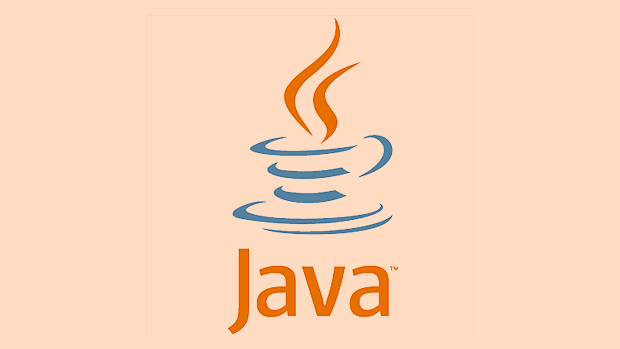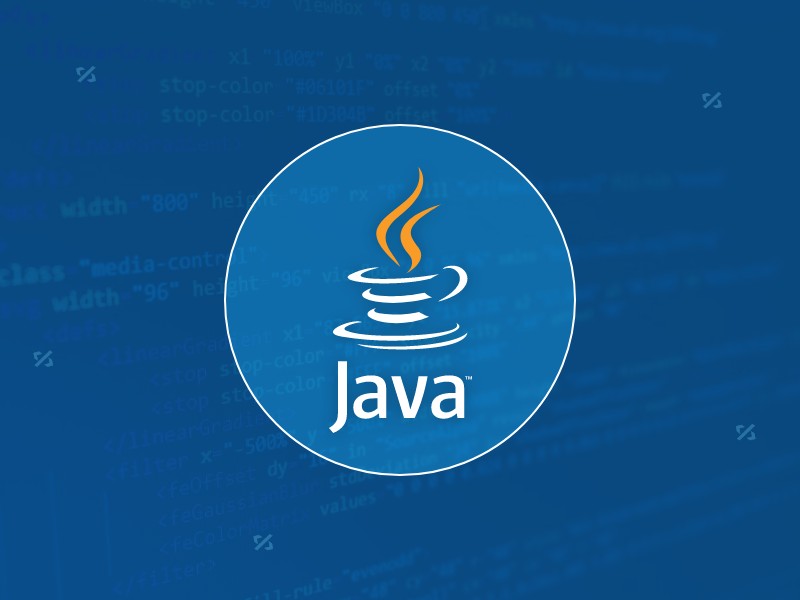Performance Tuning and Profiling Java Applications
Jul 07, 2025 am 01:52 AMKey steps for performance tuning of Java applications include: 1. Use JVM built-in tools such as jstat, jmap, and jstack to monitor GC frequency, memory distribution and thread status, and locate basic problems; 2. Use VisualVM, JProfiler or Async Profiler to analyze hot codes and identify CPU-intensive methods; 3. Optimize garbage collection behavior through GC logs and parameter adjustments, and select appropriate recyclers and heap configurations based on business load testing; 4. Avoid common traps such as excessive synchronization, frequent object creation, N 1 query, and excessive log output, and reduce unnecessary performance losses.

Performance tuning and analysis of Java applications are actually just a few key points: finding bottlenecks, understanding behavior, and rational optimization. You don't need to pursue the ultimate from the beginning, but you have to know where to start.

1. Use the built-in JVM tools to understand the running status
JVM comes with some tools, such as jstat , jmap , and jstack . Although these widgets are simple, they are very practical when troubleshooting problems. For example:

-
jstat -gc <pid></pid>can see the GC frequency and time consumption. If you find that Full GC happens frequently, the memory may become a bottleneck. -
jmap -histo:live <pid></pid>can see the distribution of objects in the heap, which helps to detect memory leaks. -
jstack <pid></pid>Print thread stack, which can be used to check deadlock or thread blocking problems.
These commands do not need to be memorized, but you have to know which types of problems they can solve. When using it, use it to process the output with grep or script, which is more efficient.
2. Use Profiling tools to locate hotspot codes
With logs and command line tools alone, it is difficult to see which method is slowing down overall performance. At this time, you need to use the profiling tool to "show X-ray".

Commonly used are:
- VisualVM : Graphical interface, suitable for local debugging, can view threads, memory, and CPU usage, and can also perform sampling or profiling.
- JProfiler : More powerful, supports remote connections, and is also helpful for production environment diagnosis, but it is commercial software.
- Async Profiler : lightweight, low overhead, suitable for short-term opening in production environments, and can accurately find CPU-intensive methods.
When using these tools, it is recommended to run the sampling mode first to see if there are any obvious hot-spot methods. If necessary, turn on more detailed tracking mode to avoid affecting system stability.
3. Pay attention to GC behavior and adjust parameters appropriately
The performance of Java applications is closely related to GC. Different garbage collectors have a lot of performance. For example, G1 is suitable for large piles of memory, while ZGC focuses on low latency.
You can observe GC in the following ways:
- Startup parameters plus
-XX: PrintGCDetails -XX: PrintGCDateStamps - Use
jstatto monitor GC frequency - Use GC log analysis tools such as GCEasy or GCViewer to view trends
Adjusting GC parameters is not the more complicated the better, for example:
- It is easy to OOM if the pile is too small, and it will increase GC time if it is too large
- The young generation is too small to set up, which will lead to frequent promotion of objects to the elderly, causing Full GC
- You can select appropriate pause target parameters according to GC type, such as
-XX:MaxGCPauseMillis=200
The key is to make decisions based on business load testing, rather than blindly applying other people's configuration.
4. Avoid common performance traps
Sometimes poor performance is not because the code is bad, but because it is a pitfall:
- Oversync : If synchronized is used too much, it will slow down the concurrency ability. You can use ReentrantLock or try lock-free structure.
- Frequently creating objects : For example, new objects in a loop can easily lead to high pressure on GC, consider reusing or using object pools.
- N 1 query problem : There is no batch processing for database access, and one interface triggers dozens of queries. This situation can be solved by adding a JOIN or cache.
- Too much log output : Too much DEBUG level log will affect IO. Remember to adjust the log level before going online.
These problems are often hidden in business logic and will only be exposed under actual stress measurement or real traffic.
Basically that's it. Performance tuning is a gradual process, don't modify JVM parameters or refactor code as soon as you start. Observe first, then analyze, and finally take action, the effect is better.
The above is the detailed content of Performance Tuning and Profiling Java Applications. For more information, please follow other related articles on the PHP Chinese website!

Hot AI Tools

Undress AI Tool
Undress images for free

Undresser.AI Undress
AI-powered app for creating realistic nude photos

AI Clothes Remover
Online AI tool for removing clothes from photos.

Clothoff.io
AI clothes remover

Video Face Swap
Swap faces in any video effortlessly with our completely free AI face swap tool!

Hot Article

Hot Tools

Notepad++7.3.1
Easy-to-use and free code editor

SublimeText3 Chinese version
Chinese version, very easy to use

Zend Studio 13.0.1
Powerful PHP integrated development environment

Dreamweaver CS6
Visual web development tools

SublimeText3 Mac version
God-level code editing software (SublimeText3)
 How to handle transactions in Java with JDBC?
Aug 02, 2025 pm 12:29 PM
How to handle transactions in Java with JDBC?
Aug 02, 2025 pm 12:29 PM
To correctly handle JDBC transactions, you must first turn off the automatic commit mode, then perform multiple operations, and finally commit or rollback according to the results; 1. Call conn.setAutoCommit(false) to start the transaction; 2. Execute multiple SQL operations, such as INSERT and UPDATE; 3. Call conn.commit() if all operations are successful, and call conn.rollback() if an exception occurs to ensure data consistency; at the same time, try-with-resources should be used to manage resources, properly handle exceptions and close connections to avoid connection leakage; in addition, it is recommended to use connection pools and set save points to achieve partial rollback, and keep transactions as short as possible to improve performance.
 How to work with Calendar in Java?
Aug 02, 2025 am 02:38 AM
How to work with Calendar in Java?
Aug 02, 2025 am 02:38 AM
Use classes in the java.time package to replace the old Date and Calendar classes; 2. Get the current date and time through LocalDate, LocalDateTime and LocalTime; 3. Create a specific date and time using the of() method; 4. Use the plus/minus method to immutably increase and decrease the time; 5. Use ZonedDateTime and ZoneId to process the time zone; 6. Format and parse date strings through DateTimeFormatter; 7. Use Instant to be compatible with the old date types when necessary; date processing in modern Java should give priority to using java.timeAPI, which provides clear, immutable and linear
 Comparing Java Frameworks: Spring Boot vs Quarkus vs Micronaut
Aug 04, 2025 pm 12:48 PM
Comparing Java Frameworks: Spring Boot vs Quarkus vs Micronaut
Aug 04, 2025 pm 12:48 PM
Pre-formanceTartuptimeMoryusage, Quarkusandmicronautleadduetocompile-Timeprocessingandgraalvsupport, Withquarkusoftenperforminglightbetterine ServerLess scenarios.2.Thyvelopecosyste,
 Understanding Network Ports and Firewalls
Aug 01, 2025 am 06:40 AM
Understanding Network Ports and Firewalls
Aug 01, 2025 am 06:40 AM
Networkportsandfirewallsworktogethertoenablecommunicationwhileensuringsecurity.1.Networkportsarevirtualendpointsnumbered0–65535,withwell-knownportslike80(HTTP),443(HTTPS),22(SSH),and25(SMTP)identifyingspecificservices.2.PortsoperateoverTCP(reliable,c
 How does garbage collection work in Java?
Aug 02, 2025 pm 01:55 PM
How does garbage collection work in Java?
Aug 02, 2025 pm 01:55 PM
Java's garbage collection (GC) is a mechanism that automatically manages memory, which reduces the risk of memory leakage by reclaiming unreachable objects. 1.GC judges the accessibility of the object from the root object (such as stack variables, active threads, static fields, etc.), and unreachable objects are marked as garbage. 2. Based on the mark-clearing algorithm, mark all reachable objects and clear unmarked objects. 3. Adopt a generational collection strategy: the new generation (Eden, S0, S1) frequently executes MinorGC; the elderly performs less but takes longer to perform MajorGC; Metaspace stores class metadata. 4. JVM provides a variety of GC devices: SerialGC is suitable for small applications; ParallelGC improves throughput; CMS reduces
 Comparing Java Build Tools: Maven vs. Gradle
Aug 03, 2025 pm 01:36 PM
Comparing Java Build Tools: Maven vs. Gradle
Aug 03, 2025 pm 01:36 PM
Gradleisthebetterchoiceformostnewprojectsduetoitssuperiorflexibility,performance,andmoderntoolingsupport.1.Gradle’sGroovy/KotlinDSLismoreconciseandexpressivethanMaven’sverboseXML.2.GradleoutperformsMaveninbuildspeedwithincrementalcompilation,buildcac
 go by example defer statement explained
Aug 02, 2025 am 06:26 AM
go by example defer statement explained
Aug 02, 2025 am 06:26 AM
defer is used to perform specified operations before the function returns, such as cleaning resources; parameters are evaluated immediately when defer, and the functions are executed in the order of last-in-first-out (LIFO); 1. Multiple defers are executed in reverse order of declarations; 2. Commonly used for secure cleaning such as file closing; 3. The named return value can be modified; 4. It will be executed even if panic occurs, suitable for recovery; 5. Avoid abuse of defer in loops to prevent resource leakage; correct use can improve code security and readability.
 Using HTML `input` Types for User Data
Aug 03, 2025 am 11:07 AM
Using HTML `input` Types for User Data
Aug 03, 2025 am 11:07 AM
Choosing the right HTMLinput type can improve data accuracy, enhance user experience, and improve usability. 1. Select the corresponding input types according to the data type, such as text, email, tel, number and date, which can automatically checksum and adapt to the keyboard; 2. Use HTML5 to add new types such as url, color, range and search, which can provide a more intuitive interaction method; 3. Use placeholder and required attributes to improve the efficiency and accuracy of form filling, but it should be noted that placeholder cannot replace label.






